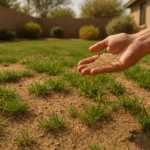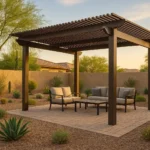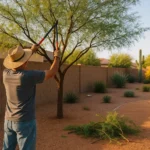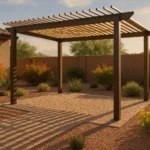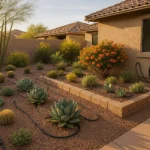As summer approaches in Gilbert, the breath-taking June heat is right around the corner. If your lawn has been showing signs of distress, this is the perfect moment to take action. A patchy lawn can be an eyesore, but don’t worry, it’s not a lost cause. With the right treatment and a bit of patience, you can revive your lawn and have it ready to endure the summer heat. Let’s dive into the process of fixing patchy lawns before the June heat sets in.
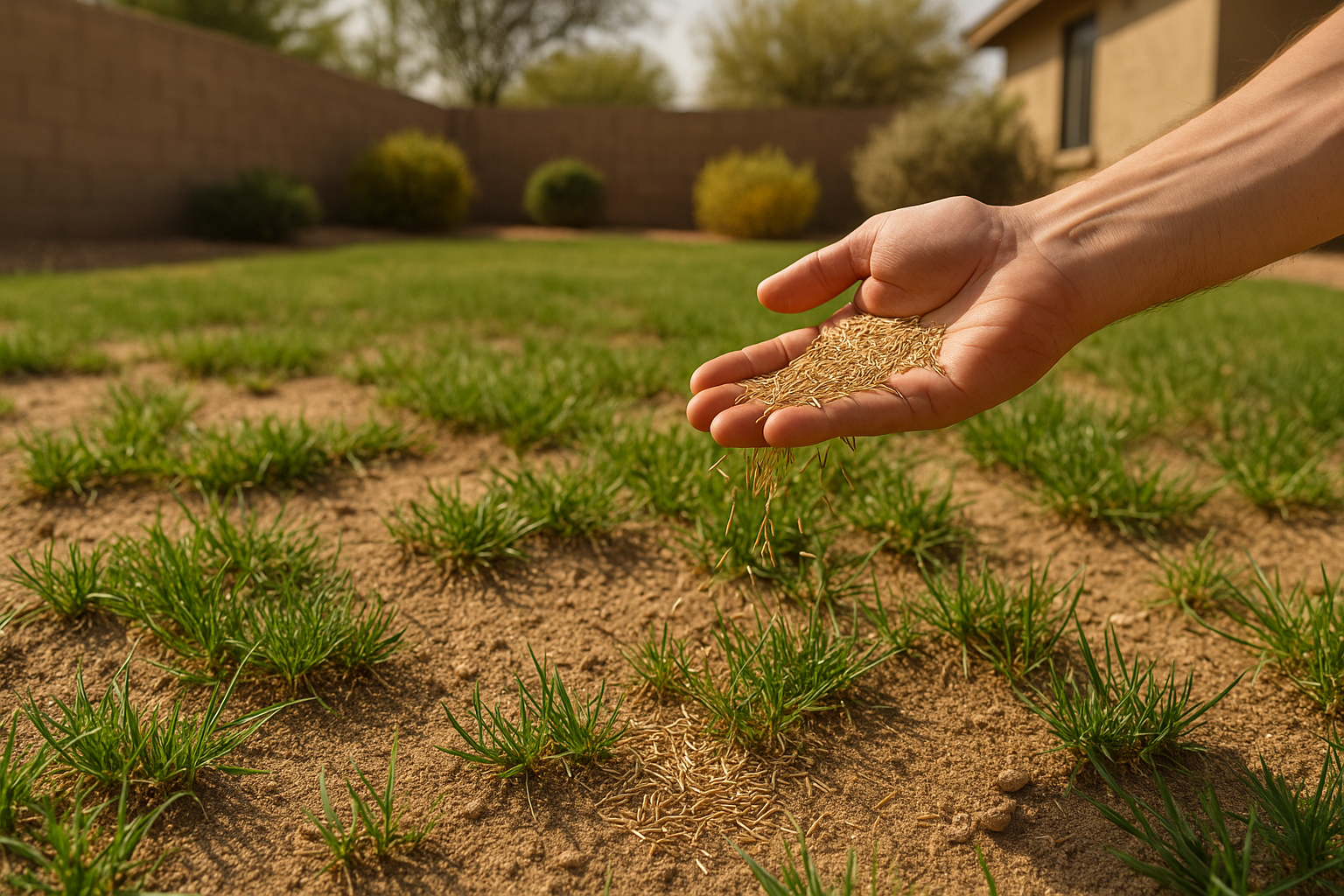
🔍 Identifying the Causes of Patchy Lawns
Before you can fix a problem, you need to identify its cause. Patchy lawns can be a result of many factors, including disease, pests, inadequate watering, poor soil quality, or even the wrong type of grass for our Gilbert climate. Understanding the root cause of the patches can help you choose the right treatment and prevent similar issues in the future.
For instance, if your lawn has brown patches with a halo of dark, wilted grass around them, you may be dealing with a fungal disease. On the other hand, if you notice irregularly shaped patches that turn yellow and then brown, it might be the work of lawn pests. Often, a simple soil test can provide valuable information about your lawn’s health and guide you on the necessary corrective measures.
🌱 Choosing the Right Grass
Choosing the right type of grass is critical when you’re trying to fix a patchy lawn. Not all grass varieties are well-suited to Gilbert’s climate. Selecting a type that can withstand the summer heat will increase your lawn’s resilience and decrease the chances of patchiness.
Bermuda grass is a popular choice for Gilbert lawns, thanks to its drought tolerance and ability to withstand high temperatures. Another good option is Zoysia grass, which is known for its dense growth that can choke out weeds and resist pest invasions. Before you make a choice, consider factors like the amount of sunlight your lawn receives and the type of soil you have.
🌧️ Adequate Watering and Irrigation
Watering plays a crucial role in maintaining a healthy, lush lawn. However, overwatering or underwatering can lead to patchy lawns. In the scorching Gilbert summer, your lawn’s water needs increase, but that doesn’t mean you should drown it. The key is to water deeply and infrequently, encouraging the grass roots to grow deeper into the soil.
Investing in a good irrigation system can help you maintain the correct watering schedule without much hassle. Remember, the best time to water your lawn is early morning, before the sun gets too intense and causes evaporation.
🔄 Lawn Aeration and Seeding
If soil compaction is the cause of your patchy lawn, aeration might be the solution. Lawn aeration involves making small holes in the soil to allow air, water, and nutrients to penetrate the grass roots. This helps the roots grow deeply and produce a stronger, more vigorous lawn.
Once you’ve aerated your lawn, it’s time to overseed the patchy areas. Use a broadcast spreader to evenly distribute the seeds. After seeding, water the lawn lightly but frequently until the new grass establishes itself.
🍽️ Fertilization and Soil Health
Fertilizing your lawn provides the nutrients it needs to grow lush and healthy. However, remember that more isn’t always better when it comes to fertilizers. Over-fertilization can harm your lawn and lead to patchiness. It’s best to get a soil test done to understand your lawn’s nutrient needs and then choose a fertilizer accordingly.
Another aspect of soil health is pH balance. Lawns typically prefer slightly acidic soil, but the exact pH preference can vary depending on the type of grass. If a soil test reveals that your lawn’s pH is off, you can use lime to raise it or sulfur to lower it.
🕵️♂️ Regular Monitoring and Maintenance
Last but not least, regular monitoring and maintenance can go a long way in preventing patchy lawns. Keep an eye out for signs of disease or pest infestation and take action before the problem gets out of hand. Regular mowing, weeding, and dethatching can keep your lawn in top shape and ready to face the Gilbert summer heat.
Fixing a patchy lawn can require some effort, but the results are worth it. A lush, green lawn not only adds to your home’s curb appeal but also provides a cooling effect during the hot summer months. So get started on your lawn revival journey, and feel free to reach out if you have any questions or need further assistance.

